WWII Normandy France Olive Drab American Infantry Medic Soldier Armband
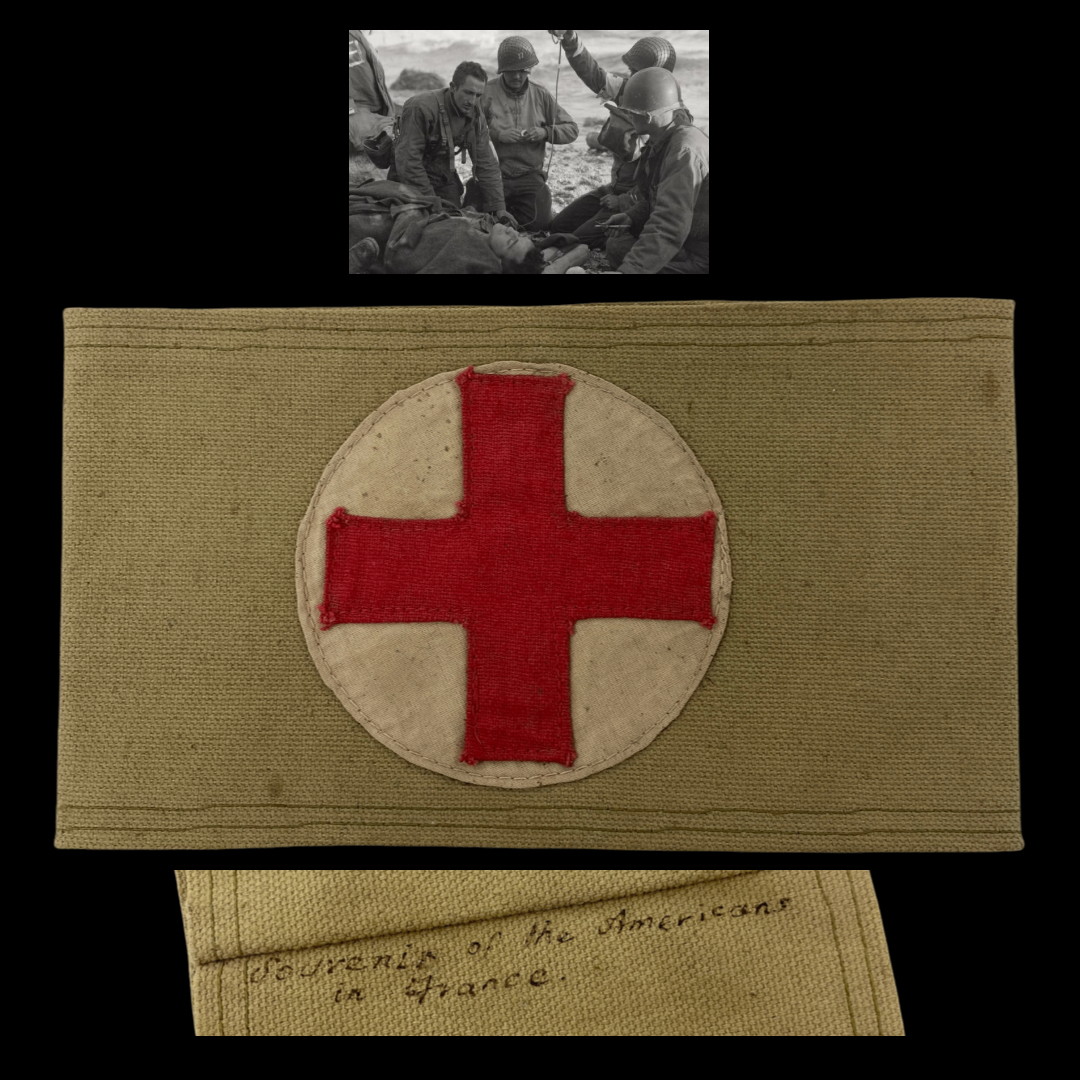


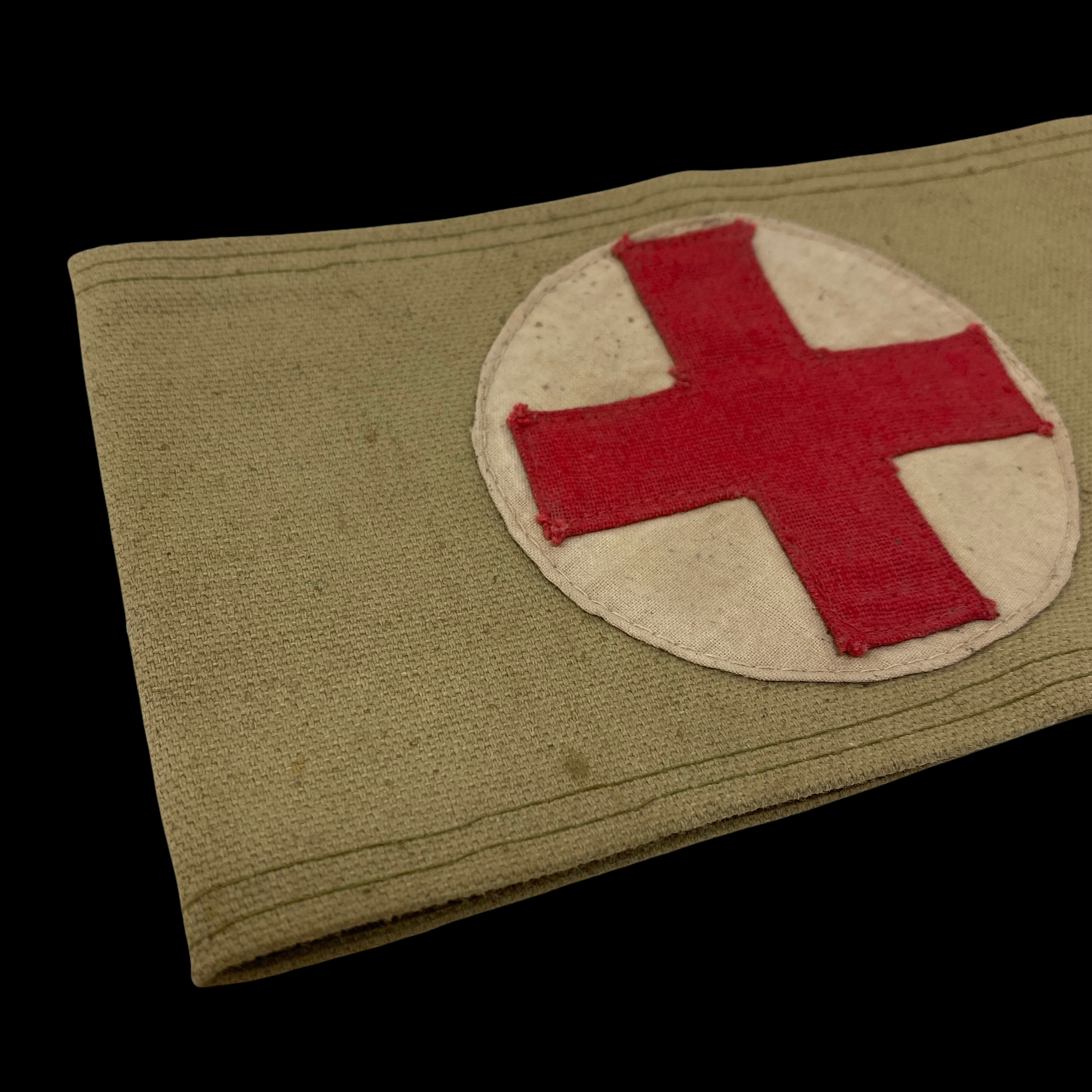


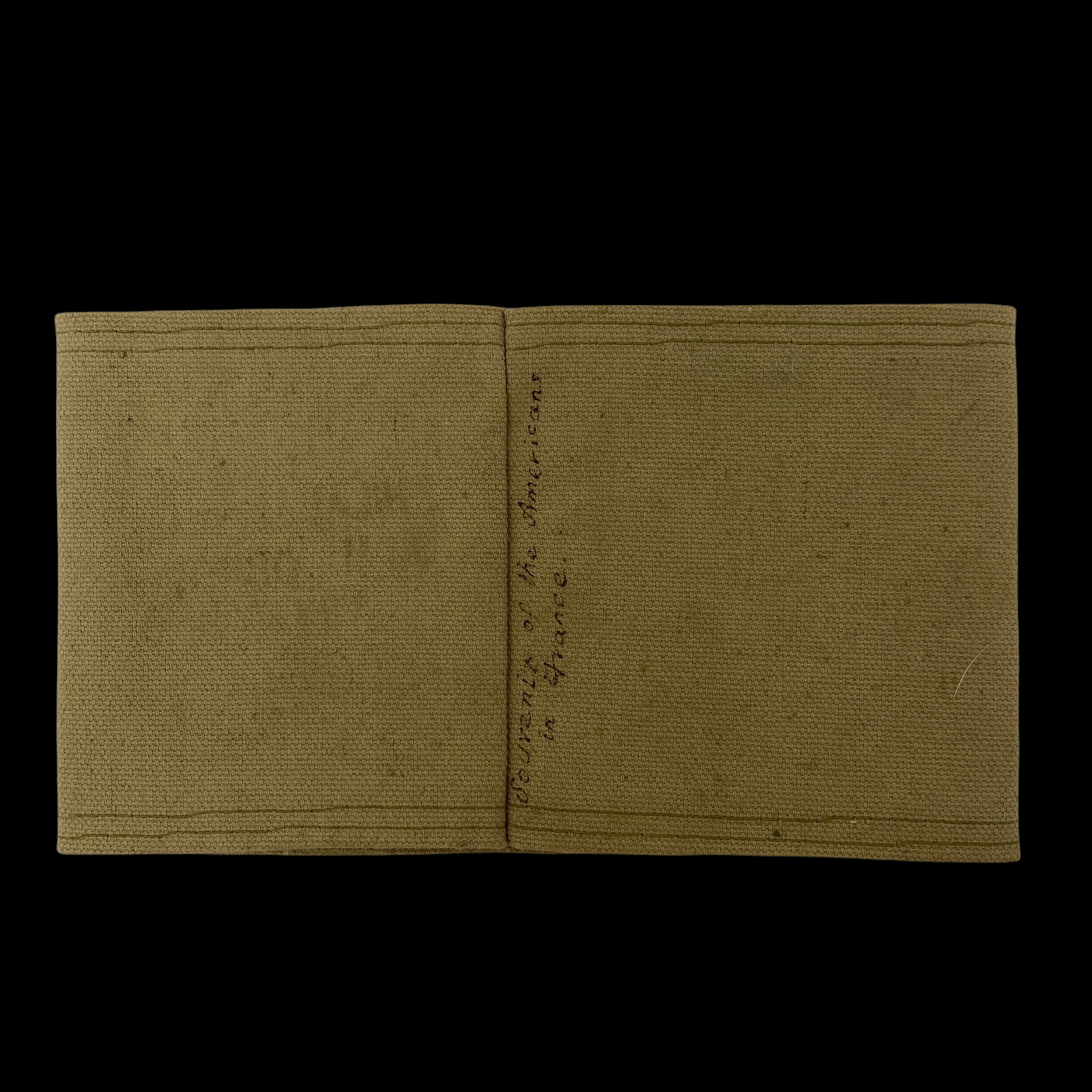


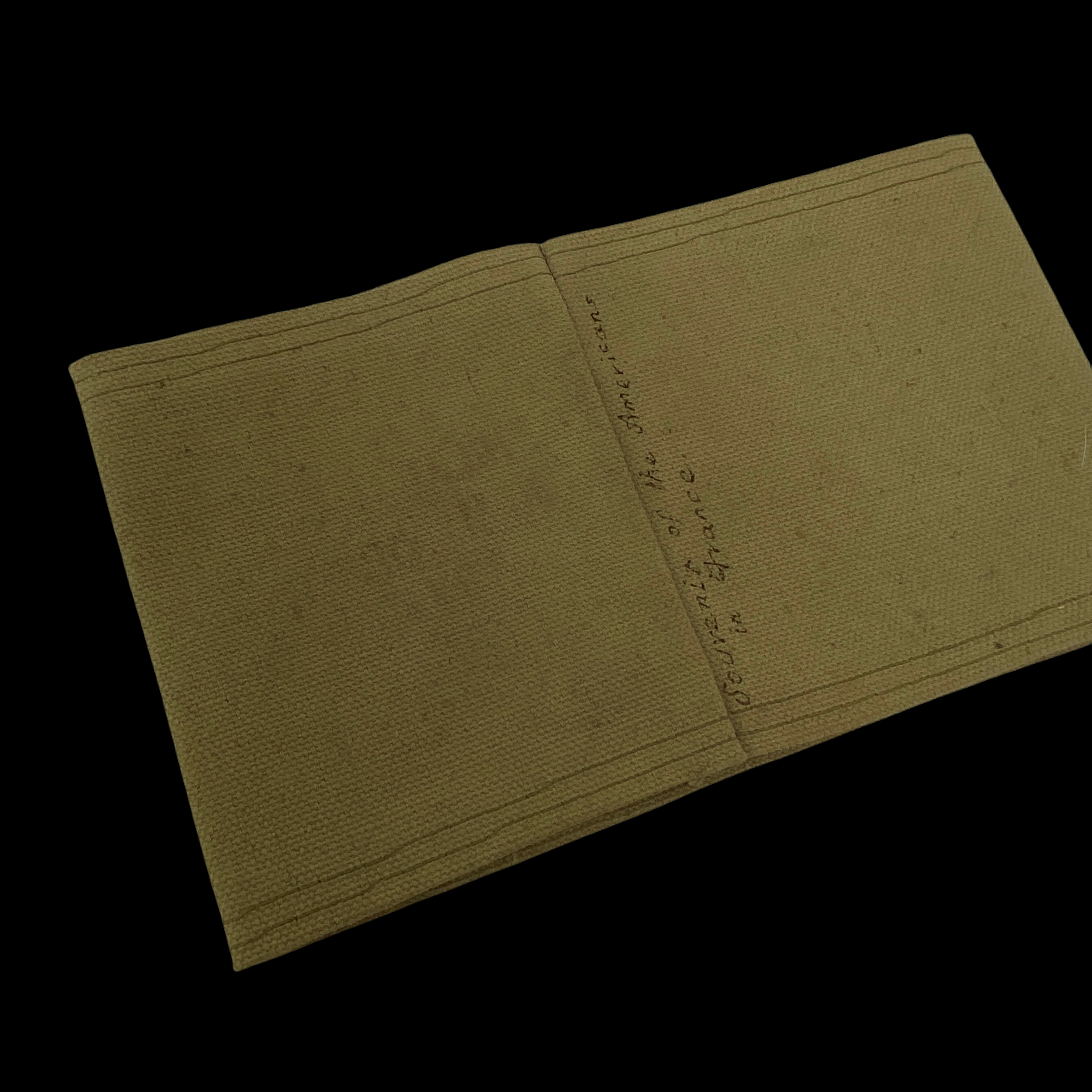
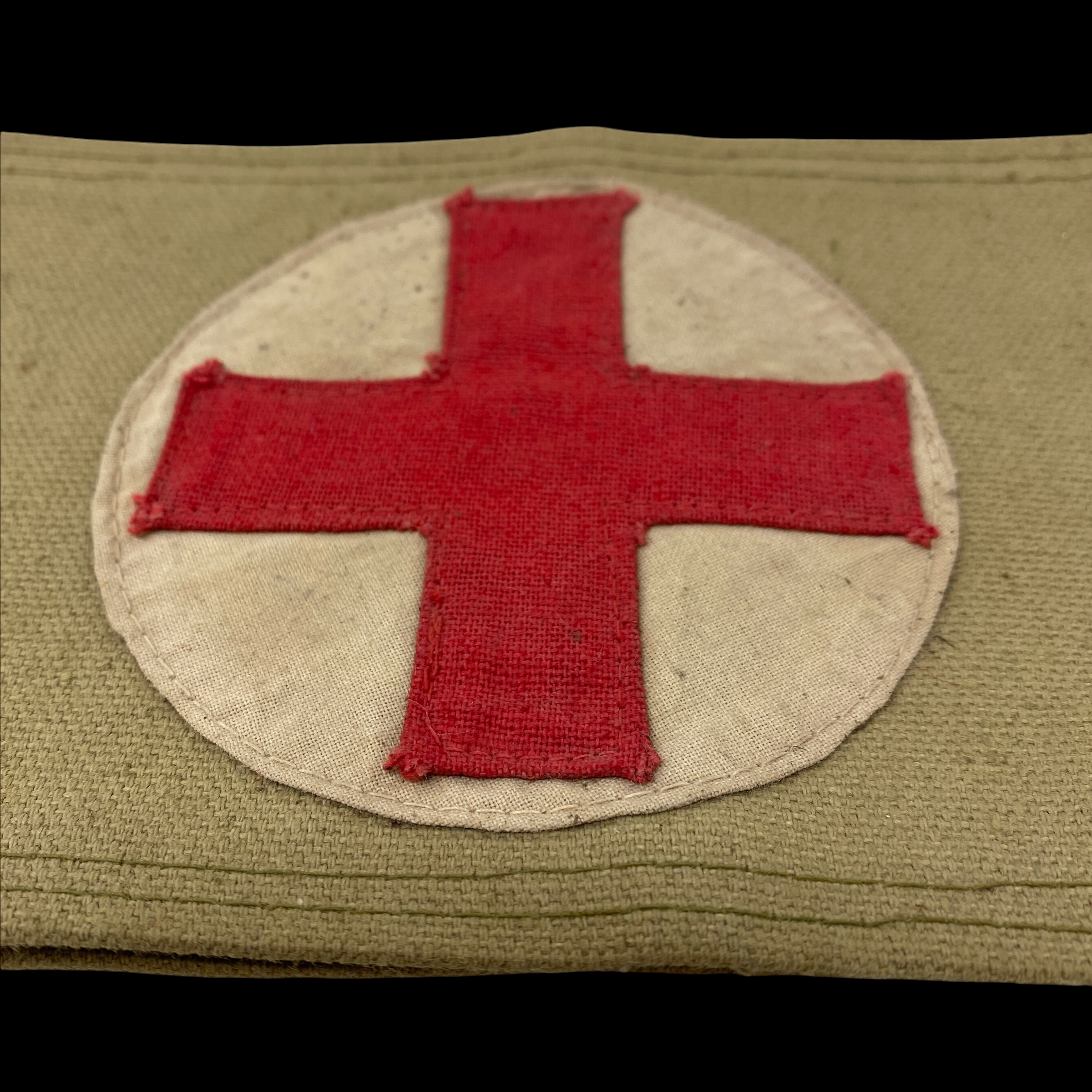
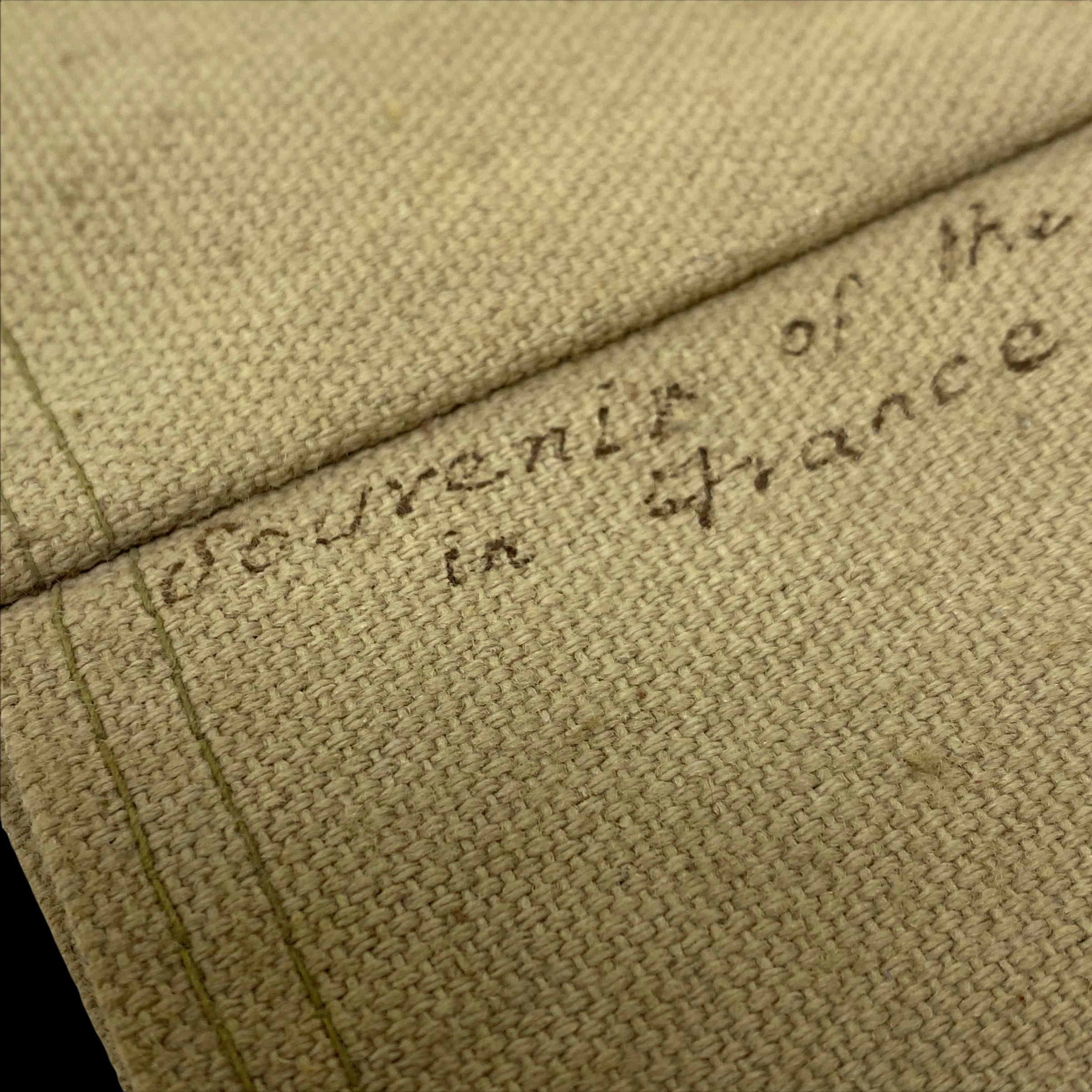
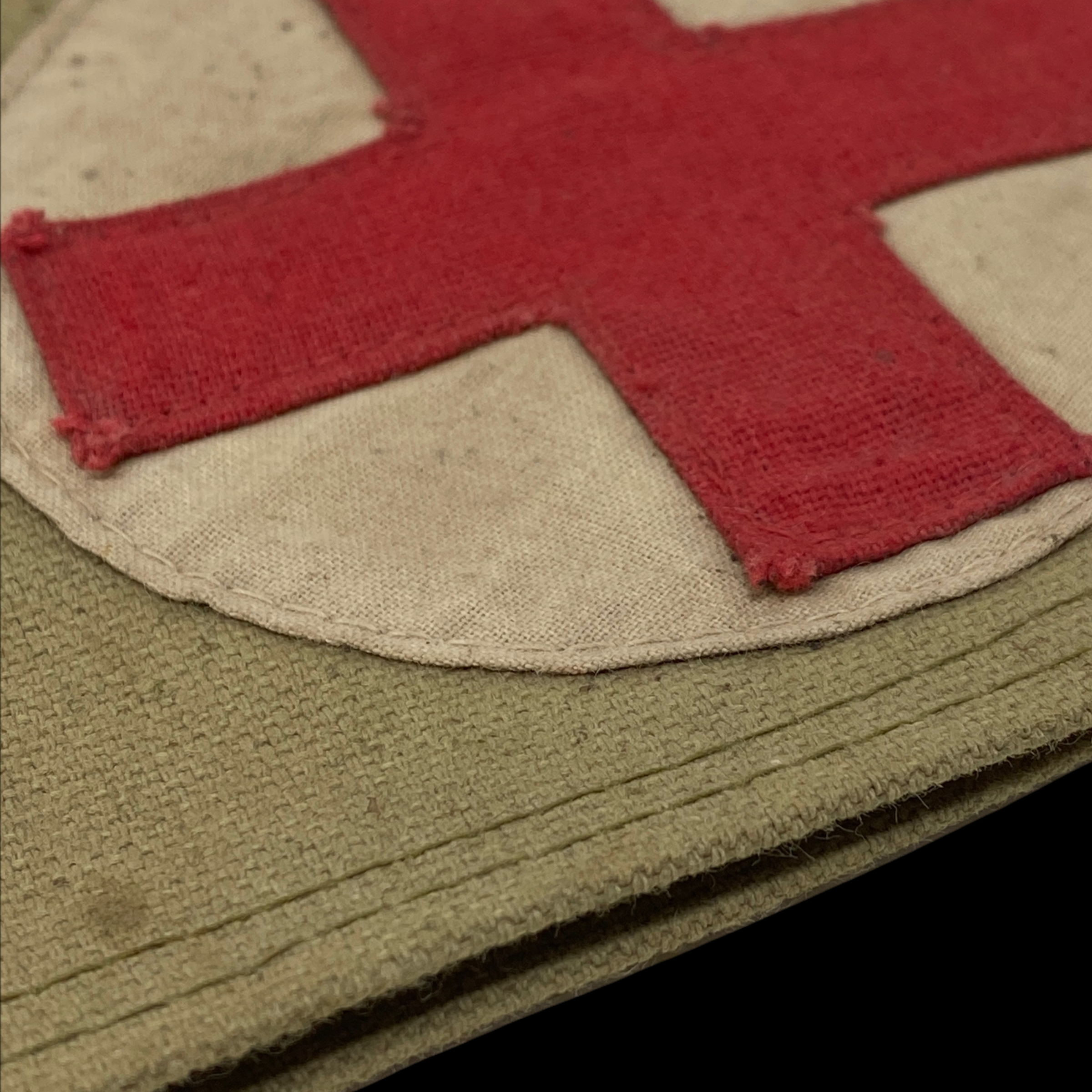
WWII Normandy France Olive Drab American Infantry Medic Soldier Armband
Comes with C.O.A.
On any World War II battlefield, there would be found thousands of men trained and ready to do one thing: take the life of the enemy. But there would also be a few trained and ready to do an entirely different mission: save lives. These were the battlefield medics.
This orignal WWII U.S. Army infatry airband is an olive drab color and shows tremendous ETO theater wear use while still maintaining a great condition. These helped identify a medic to wounded men seeking treatment, and in theory protected them from enemy attack. In some cases, however, it made the medic a target. This armband would've blended in very nicely with the medics overcoat or uniform well still displaying the infamous white and red cross. What makes this armband even more incredible is the backside inscription written by what is believed to be a French civilan as it reads “Souvenir of the Americans in France”. After the Allied D-Day invasion on June 6th, 944 the Allies pushed further into Normandy and cental France.
On D-Day, June 6, 1944, dozens of medics went into battle on the beaches of Normandy, usually without a weapon. The large red cross on their helmets was supposed to protect them, and Germans usually (but not universally) respected that convention. But even aside from the threat of direct enemy fire, being a combat medic was a dangerous assignment; shell fire and shrapnel drew no distinction between combatants and noncombatants.
On D-Day, and especially on Omaha Beach, evacuation of wounded soldiers was a nearly impossible task. Not only did the number of wounded exceed expectations, but the means to evacuate them did not exist. Landing craft off-loading invasion personnel had no time to carry the wounded back to the fleet, and were not under orders to do so. While some did assist in medical evacuation, most of the wounded on the beaches had to be brought forward to cover, or left where they had fallen. The Normandy Invasion is one of the few battles in history where the wounded were moved forward, into fire, whether than back, away from the fighting.
Medical teams on D-Day found many challenges in performing their duties. Those who were dropped behind Utah Beach with airborne and glider forces often found their medical supplies lost; the sea-borne forces, especially those at Omaha Beach, found themselves in the wrong places, with little in the way of equipment, and with nowhere to establish aid stations. Nevertheless, the medics of Operation Overlord heroically improvised ways to treat as many wounded as they could, at great personal risk. Illustrating the valor, fidelity and sacrifice of the medics on D-Day is the story of Cecil Breeden. Landing in the first wave at the Dog Green sector of Omaha Beach, Breeden was the only one to survive when his landing craft came under intense enemy fire. Reaching safety on the beach, Breeden did not hesitate to turn around to rescue several wounded men from the water, dragging them to safety and stabilizing them as best he could. With virtually all of his own company killed, he joined a group from the 2nd Rangers and fought on through the Battle of the Bulge. He was awarded the Bronze Star with two Oak Leaf Clusters for his bravery as a medic.
Medics were sometimes chosen for their medical expertise; more often they had to be trained from scratch. Some were conscientious objectors who opposed the taking of life and were assigned this role as an alternative to a combat role. One such medic was PFC Desmond Doss of Lynchburg, VA, who refused to carry arms due to his religious faith, but who wanted to serve his nation in a noncombatant role. On Okinawa in May 1945, Doss single-handedly saved the lives of some 75 men by braving enemy fire to rescue them. He was awarded the Congressional Medal of Honor, the first conscientious objector and one of only eleven medics in WWII to be so honored.